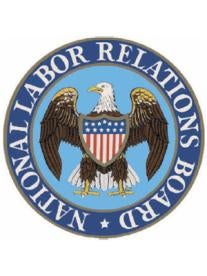Ruling Will Require Bargaining In Combined Units Including Employees Of Multiple Employers – Greatly Multiplies Impact of BFI Expanded Joint Employer Test
The National Labor Relations Board (“NLRB” or “Board”) announced in its 3-1 decision in Miller & Anderson, 364 NLRB #39 (2016) that it will now conduct representation elections and require collective bargaining in single combined units composed of what it refers to as “solely employed employees” and “jointly employed employees,” meaning that two separate employers will be required to join together to bargain over such employees’ terms and conditions of employment.” To understand the significance of Miller & Anderson, one must consider the Board’s August 2015 decision in Browning Ferris Industries (“BFI”), in which the Board adopted a new and far more relaxed standard for holding two entities to be joint employers.
As the Board explained in its press release trumpeting the Miller & Anderson decision, it will now hold elections and require bargaining in “petitioned-for units combining solely and jointly employed workers of a single user employer,” in those cases in which a union asks for such a mixed employer unit so long as the Board finds the jointly and solely employed workers “share a community of interest,” under the Board’s “traditional community of interest factors for determining unit appropriateness.”
Oakwood Care Center Overruled – Employers’ Consent No Longer Required
Board has overturned it’s 2004 decision in Oakwood Care Center, 343 NLRB 659 and held that when a union petitions for a representation election in a unit that includes both “solely employed” and jointly employed employees of a single “user employer” the Board will no longer require the consent of the employer or employers before directing such an election and certifying a union to represent such a unit. What this means essentially is that unions alone will now have the right to decide when and where they will require such mixed units.
Like it did in BFI, the Board again justified overruling precedent in part based on “changes in the American economy,” finding “Oakwood imposes additional requirement that are disconnected from the reality of today’s workforce and are not compelled by the Act.”
“User Employers” and “Supplier Employers” Will Be Required to Bargain Together
In BFI, the Board held that a business will be held to be a joint employer of another employer’s employees where it has the ability to impact the terms and conditions of the other employer’s employees even if it never exercises that right. Under the new standard enunciated by the Board majority in that case, “[t]he Board may find that two or more entities are joint employers of a single work force if they are both employers within the meaning of the common law, and if they share or codetermine those matters governing the essential terms and conditions of employment.”
Now, under Miller & Anderson, such a user employer will be required to bargain over the terms and conditions of a supplier employer’s employees as to whom the Board finds it to be a joint employer. Additionally, the supplier employer will also have to bargain over the jointly employed employees terms and conditions. In overruling precedent and imposing a new combined unit bargaining obligation, the Board reasoned that requiring consent of both employers for a combined unit of jointly and non-jointly employed employees did not afford employees “the fullest freedom” to “self-organization.” However, as Member Miscimarra’s dissent points out, the Board majority attempts to explain away the specific language of Section 9(b) of the NLRA and applicable legislative history limiting the broadest units the Board can impose to “employer units” as opposed to multi-employer units.
The potential for confusion and uncertainty is enormous. In an attempt to minimize these concerns the Board majority stated that the so-called user employer’s bargaining obligations will be limited to those of such workers’ terms and conditions that it possesses “the authority to control.”
What Does All of This Mean?
As we pointed out, the Board’s decision in Miller & Anderson, which has been anticipated for more than one year, is another critical link in the current Board’s efforts to make it easier for unions to successfully organize and obtain bargaining rights. It should be seen as the next step in the progression that began with the Board’s change in its representation election rules that were designed for quicker elections and representation proceedings in which employers lost their right to litigate critical unit and supervisory status issues before an election is directed, and to appeal of a Regional Director’s decision and direction of election before an election is conducted, and the time they have traditionally had to communicate with employees before they vote in an election.
When employers voiced their concern that the new election rules would mean that they would in many instances not have any meaningful opportunity to present counterarguments to a union’s promises before a vote took place, the Board and other advocates for the expedited rules countered that this was an empty argument and that employers were almost always aware of union activity long before a petition was filed. That argument now looks particularly empty given Miller & Anderson’s dictates allowing petitions for user and supplier employers’ employees in the same unit, where at least one of the two joint employers will likely be totally aware of what is occurring among a group of another employer’s employees.
Similarly, while the Board suggests that the supplier and user employer will only have an obligation to bargain over those terms and conditions they possess the authority to control, the fact is that this is an invitation to extensive litigation and disagreement over which entity has the “authority” to control which terms and conditions.
What Should Employers Do Now?
At a minimum, a detailed risk assessment of an employer’s workforce and its reliance upon its own employees and temporaries, leased and contract labor employed and controlled, in whole or in part, by so-called supplier employers is in order. “User” employers should determine the goals and risks associated with a relationship and determine whether it is possible and/or desirable to attempt avoid a joint employer relationship or embrace it but attempt to control liability. Both “supplier” and “user” employers should look for contractual provisions regarding defining the relationship, including who controls and does not control certain aspects, indemnification provisions, provisions related to responses and responsibilities related to union organizing and collective bargaining and similar concerns. Experienced labor counsel should be consulted to assist in these issues.




 i
i

